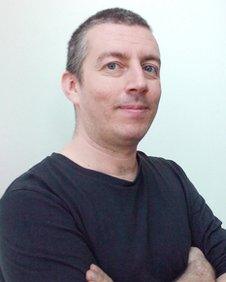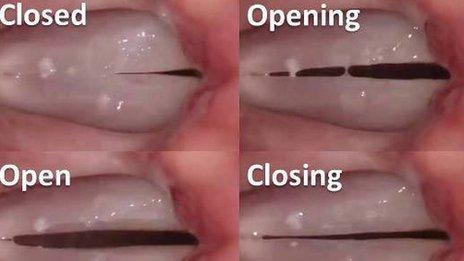Voice algorithms spot Parkinson's disease
- Published

Mr Little wants to create a database of voices to help diagnose Parkinson's
Parkinson's is a devastating disease for those living with the condition and currently there is no cure.
Diagnosis can also be slow as there are no blood tests to detect it.
But now mathematician Max Little has come up with a non-invasive, cheap test which he hopes will offer a quick new way to identify the disease.
He will be kicking off the TEDGlobal conference in Edinburgh calling for volunteers to contribute to a huge voice database.
Mr Little has discovered that Parkinson's symptoms can be detected by computer algorithms that analyse voice recordings.
In a blind test of voices, the system was able to spot those with Parkinson's with an accuracy of 86%.
Mr Little was recently made a TED Fellow.
The non-profit organisation behind the TED (Technology, Entertainment and Design) conference creates 40 such fellowships each year. The programme aims to target innovators under the age of 40 and offers them free entry to conferences and other events.
Intel founder
Mr Little became interested in understanding voice from a mathematical perspective while he was studying for a PhD at Oxford University in 2003.
"I was looking for a practical application and I found it in analysing voice disorders, for example when someone's voice has broken down from over-use or after surgery on vocal cords," he told the BBC.
"I didn't occur to me at the time that people with Parkinson's and other movement disorders could also be detected by the system."
But a chance meeting with someone from Intel changed that.
Andy Grove, one of Intel's founders and ex-chief executive, was diagnosed with Parkinson's in 2000 and has since pledged millions of his personal fortune to fund research into the disease.
This includes funds for the chipmaker to develop its own projects to monitor the symptoms.
"They were using devices that detect breakdown in dexterity and accelerometers but they had also recorded the voices of around 50 patients with Parkinson's," explained Mr Little.
The recordings were detailed as the team had recorded the patients once a week over a six-month period.
"They had an enormous amount of data but they didn't know what to do with it. So we wondered whether my technique would work," said Mr Little.
"They set me a blind test to see if I can tell them which ones had Parkinson's. I had 86% accuracy using the techniques I'd developed."
Voice tremors

The technology works partly by tracking the motion of vocal cords
The system "learns" to detect differences in voice patterns.
"This is machine learning. We are collecting a large amount of data when we know if someone has the disease or not and we train the database to learn how to separate out the true symptoms of the disease from other factors."
Voice patterns can change for a number of reasons, including throat surgery, heavy smoking and even just having a common cold.
But Mr Little believes the system will be smart enough to tell the difference.
"It is not as simple as listening for a tremor in the voice. That tremor has to be in context of other measures and the system has to take in other factors such as if someone has a cold."
Now he is looking for volunteers to contribute to a vast voice bank to help the database to learn even more.
He is aiming to record up to 10,000 voices and has set up local numbers in 10 countries around the world. In the UK the number is 01865 521168.
Anyone can call and they need to state whether or not they have been diagnosed with the disease.
There is also a <link> <caption>website</caption> <url href="http://www.parkinsonsvoice.org/" platform="highweb"/> </link> where people can find out more about the project.
"The more people that call in, the better," he said.
"If we get 10,000 recordings we'd be very happy but even a tenth of that would be great,"
Clinical trials
He hopes that the technology will be available to doctors within the next two years.
"We're not intending this to be a replacement for clinical experts, rather, it can very cheaply help identify people who might be at high risk of having the disease and for those with the disease, it can augment treatment decisions by providing data about how symptoms are changing in-between check-ups with the neurologist," he said.
There could also be a role for the technology in clinical trials.
"The technology makes it easy for people to report their progress whilst on a new drug, for example," he added.
"If you can catch the disease early it will make a huge difference to care costs. It could become a key technology in reducing the burden of care on the NHS."